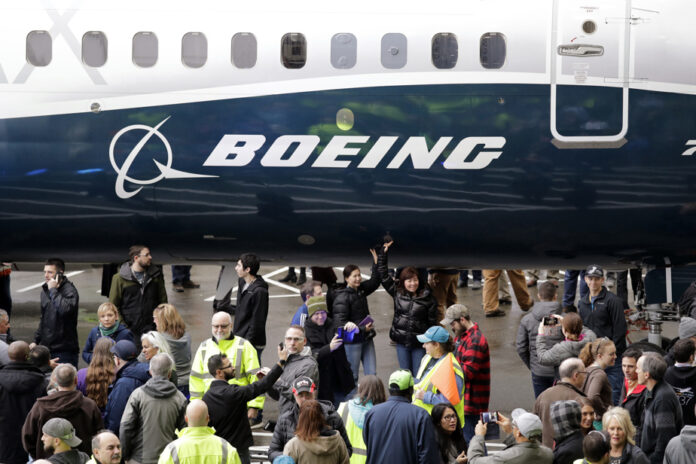(New York) US aircraft maker Boeing posted a second-quarter loss, but less than analysts expected, and confirmed its full-year guidance on Wednesday.
“We continue to make steady progress towards our turnaround,” group boss Dave Calhoun said in a message to employees. “You will see that we are on the right track to restore our operational and financial strength.”
The net loss was $149 million, when analysts had expected a loss of $212 million. But a year earlier, the group posted a profit of 193 million.
This is the fourth quarter in a row that Boeing has posted a loss, but it is much lower than in the first quarter (425 million).
Reported per share and excluding exceptional items – a benchmark for the markets – the loss comes to 25 cents. It is also better than expected.
In terms of turnover, the aircraft manufacturer exceeded the consensus with 19.75 billion dollars between April and June (18% over one year).
The stock was up 6% at $226.96 as of 10:30 a.m. EST on the New York Stock Exchange.
“Boeing achieved several critical milestones in the second quarter, particularly on cash,” Peter McNally of Third Bridge said in a note.
“Boeing’s implementation has improved and it will need to continue to do so to achieve sustainable profitability,” he noted.
Boeing still expects operating cash for the year to be between $4.5 billion and $6.5 billion and available cash between $3 billion and $5 billion. Data particularly scrutinized by experts.
“We are confident that we will reach $10 billion in available liquidity in 2025-26,” Brian West, chief financial officer, said in a conference call with analysts.
Boeing also confirmed its delivery targets for the year: 400 to 450 aircraft for the 737 and 70 to 80 for the 787.
The monthly production rate of the 737 continues to increase to soon reach 38 aircraft (compared to 31 previously), with the intention of always increasing it to fifty per month by 2025-2026. For the 787, the project is to increase to ten at the same time (5 per month at the end of 2023).
But the group faced, like industrialists in many sectors, problems with supply and logistics, Mr. Calhoun pointed out in his message.
“We will remain in a world with supply constraints for the near future,” he told analysts.
In an interview with CNBC on Wednesday, he explained that the sourcing pitfalls are gradually “disappearing”, which is good because the group has signed major contracts in recent weeks.
“Right now, we are fully focused on markedly improving our operating performance, including deliveries, earnings, margins and liquidity. All of which will progress through 2023 and, while challenges remain, we are moving in the right direction,” West told analysts.
Boeing received 460 net orders for its commercial aviation arm in the quarter, including 220 for Air India and 39 for Riyadh Air, and “secured” up to 300 of its 737 MAX with Ryanair. The turnover of this branch jumped by 41% over one year.
“As expected, [the business] commercial aviation is in loss […] but the operating margin continues to approach the balance,” underlined Mr. McNally.
In the Defence, Space and Security branch, several charges affected the result: 257 million dollars due to the delay of the first manned flight of the Starliner space capsule, 189 million for the T-7A Red Hawk military trainer in forecast of possible additional costs and 68 million under the MQ-25 tanker drone program due to delays.
Its backlog reached $440 billion at the end of June.















